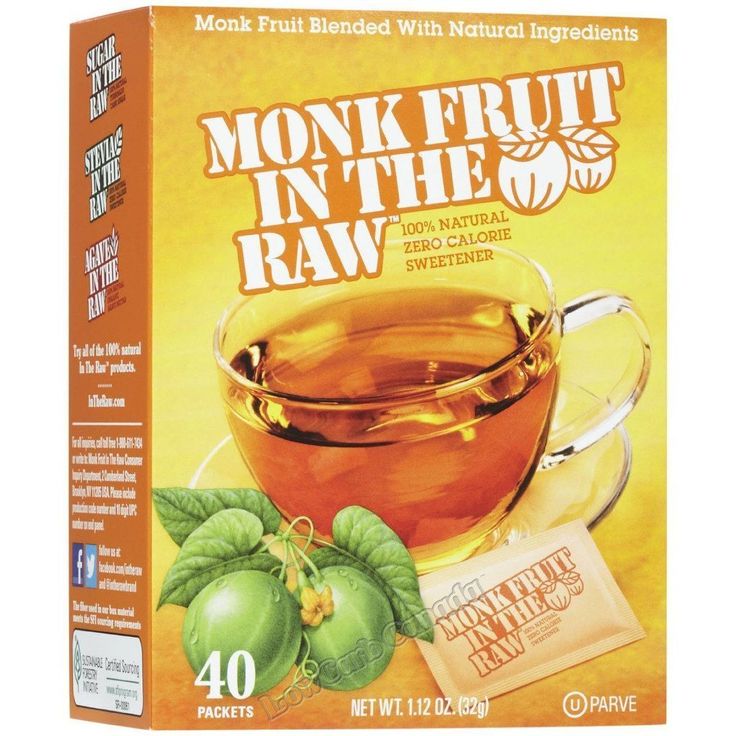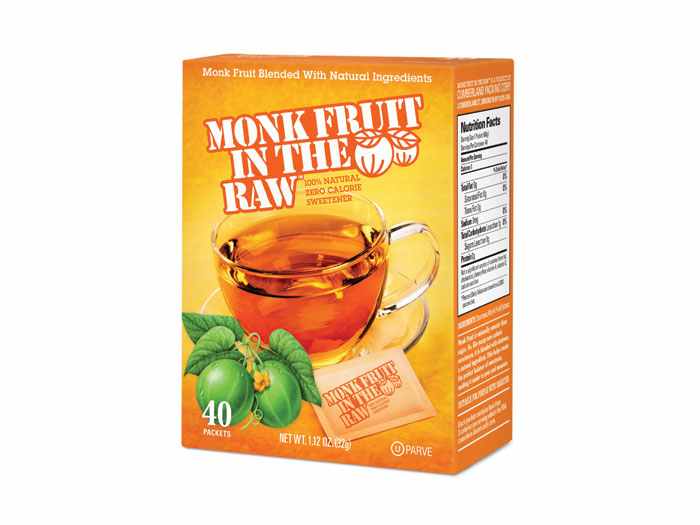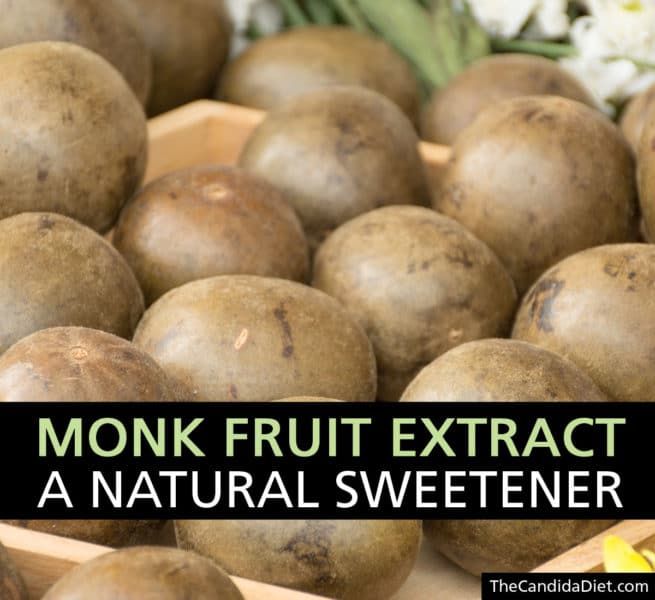Understanding The Glycemic Index
The Glycemic Index tells us which carbohydrate-containing foods raise our blood glucose levels and which are lower on the scale. If you have diabetes, you likely know how important it is to eat low-glycemic foods, as too much glucose can be dangerous. If someone you love has diabetes, knowing about the index can be helpful when preparing food or assisting a family member who needs dietary support.
The goal is to plan meals that are rated low to medium on the GI scale. These might include beans, corn, rice, whole grain breads, sweet potatoes, many fruits, and all non-starchy veggies. Higher GI foods include instant oatmeals , pineapples, boxed mac and cheese, and cereals such as corn flakes. Generally, the more fat or fiber in a food, the lower on the GI scale. The more processed a food, the higher.
When it comes to sweeteners, there are plenty on the market and mixed into our favorite foods. Look out for sweeteners such as maltodextrin, dextrose, glucose, sucrose, and even caramel, as they all rank highest on the GI. Honey, maple syrup, and agave sit squarely in the middle, and monk fruit sits on the lower end, earning a zero on GI scale, right next to stevia.
What Is Monk Fruit Sweetener
Monk fruit sweetener is extracted from monk fruit.
The monk fruit is also known as luo han guo or Buddha fruit. Its a small, round fruit grown in Southeast Asia.
This fruit has been used for centuries in traditional Chinese medicine, but the Food and Drug Administration didnt approve its use as a sweetener until 2010.
The sweetener is created by removing the seeds and skin of the fruit and crushing it to collect the juice, which is then dried into a concentrated powder.
Monk fruit contains natural sugars, mainly fructose and glucose.
However, unlike in most fruits, the natural sugars in monk fruit arent responsible for its sweetness. Instead, it gets its intense sweetness from unique antioxidants called mogrosides.
During processing, mogrosides are separated from the fresh-pressed juice. Therefore, monk fruit sweetener does not contain fructose or glucose.
Because this extract may be 100250 times sweeter than table sugar, many manufacturers mix monk fruit sweetener with other natural products, such as inulin or erythritol, to reduce the intensity of the sweetness.
Monk fruit extract is now used as a standalone sweetener, an ingredient in food and drinks, a flavor enhancer, and a component of sweetener blends .
SUMMARY
Monk fruit sweetener is a natural, zero-calorie sweetener. It is high in unique antioxidants called mogrosides, which make it 100250 times sweeter than regular sugar.
Sucralose The Most Popular Sugar Substitute
This sweetener is excellent for people with type 2 diabetes. Thats because Splenda is 600 times sweeter than sugar, yet those little yellow packets have no effect on blood sugar, says Keri Glassman, RD, CDN, of Nutritious Life, a nutrition practice based in New York City.In addition, Splenda passes through the body with minimal absorption. These attributes have helped it become the most commonly used artificial sweetener worldwide, according to an article published in October 2016 in Physiology & Behavior.
The Food and Drug Administration , which has approved sucralose, recommends an acceptable daily intake of 5 milligrams or less of sucralose per kilogram of body weight per day. A 132-pound individual would need to consume 23 tabletop packets of the artificial sweetener per day to reach that limit.
Recommended Reading: How To Control Pp Sugar
Artificial Sweeteners Can Still Raise Your Glucose Levels
One 2016 study saw normal-weight individuals who ate more artificial sweeteners were more likely to have diabetes than people who were overweight or obese.
Another 2014 study found that these sugars, such as saccharin, can change your gut bacteria composition. This change can cause glucose intolerance, which is the first step towards metabolic syndrome and diabetes in adults.
For people who dont develop a glucose intolerance, artificial sweeteners may help with weight-loss or diabetes control. But switching to this sugar replacement still requires long-term management and controlled intake.
if youre thinking of replacing sugar regularly, talk to your doctor and dietitian about your concerns.
Saccharin The Oldest Artificial Sweetener

Saccharin, the sweetener sold in pink packets under the brand name Sweet ‘N Low, is calorie-free and is about 300 to 500 times sweeter than sugar, per the Sweet N Low website. It was the first artificial sweetener, with chemists discovering it as a derivative of coal tar by mistake in 1879, according to Encyclopedia Britannica.
If youve been using artificial sweeteners since the 1970s, you may remember a previous warning label that warned of saccharin increasing the risk for cancer. But rest assured it’s safe. The research that prompted the label was done on animals, and further studies by the National Toxicology Program of the National Institutes of Health concluded that saccharin shouldnt be on the list of potential carcinogens. Saccharin is currently FDA-approved.
A 132-lb individual would need to consume 45 tabletop packets of the artificial sweetener per day to reach the ADI of 15 mg of saccharin per kg of body weight per day, according to the FDA.
Also Check: How To Control High Sugar Level Immediately
Monk Fruit Sweetener Side Effectsmonk Fruit Extract Side Effects
Monk fruit side effects, While monk fruit sweetener or monk fruit sugar allergies are uncommon, there is a chance of an allergic reaction to any food you eat. Monk fruit is a member of the Curcurbitaceae family , which includes pumpkin, squash, cucumbers, and melons. Monk fruit allergy can be more severe if you have allergies to other gourds. You may experience an allergic reaction if you are allergic to:
- wheezing
But, Monk fruit sweeteners are generally considered safe by the U.S. Food and Drug Administration. Monk fruit sweeteners are not known to cause any side effects.
Monk Fruit For Cancer
Preliminary studies reveal that monk fruit may fight or prevent cancer cell growth.
A 2016 study published in Nutrients shows that the mogrosides in monk fruit extract may suppress colorectal and throat cancers.
Another 2016 study shows that those mogrosides may also fight pancreatic cancer cells.
These studies have only been performed in a lab. No human studies to date suggest that monk fruit fights any form of cancer in the human body.
Also Check: Sugar Tablets Side Effects
Does It Contain Any Sugar Or Calories
Pure monk fruit extract powder does not typically contain sugar or calories. The sweet taste in monk fruit comes from the extracted mogrosides, which is a non-nutritive sweetener, which means it contains very little to no calories.1
I looked at a few different brands and saw that some pure monk fruit powders contain 1 gram of carbohydrates, which is hardly worth noting. Some name brands that use monk fruit extract to create sugar-free sweeteners also contain other compounds, such as sugar alcohols, stevia, or even a few grams of real sugar. If you are trying to avoid these things, it is best to check labels and go for pure monk fruit powder sweetener.
What Are Natural & Artificial Sweeteners
The FDA defines sweeteners as: commonly used as sugar substitutes or sugar alternatives because they are many times sweeter than sugar but contribute only a few or no calories when added to foods.
This means that regular sugar, honey, and Agave nectar/syrup dont fall into the sweetener category. However, I do want to address these quickly before moving on to the real natural and artificial sweeteners, since Ive seen claims of how honey and agave wont impact blood sugar in the same way as sugar.
Also Check: Sugar In Low Blood Pressure
How Is Monk Fruit Able To Provide Zero
Monk fruit contains natural sugar. Both fructose and glucose are found in this small Asian fruit.
However, monk fruit doesnt owe its sweet taste to fructose and glucose. Most of its sweetness comes from compounds called mogrosides. A mogroside is an antioxidant. Its made up of a structure called a mogrol thats attached to glucose units or glycosides.
During processing, the mogrosides are separated from the rest of the monk fruit juice, and they ultimately serve as the basis for the sweetener. Since monk fruit sweetener is made with isolated mogrosides, its free of the fructose and glucose that are found in pure monk fruit juice.
So, what is monk fruit able to deliver when it comes to sweetness? A monk fruit sweetener can be anywhere from 100-250 times sweeter than table sugar or granulated sugar. Its sweetness will depend on the concentration of mogrosides found in the extract.
As weve mentioned, monk fruit sweeteners are calorie-free. How is monk fruit extract able to provide this sweetness with zero calories? The zero-calorie property of this natural sweetener has everything to do with the mogrosides it contains. Mogrosides arent absorbed in the upper gastrointestinal tract as a result, they dont deliver any calories to the body. Therefore, monk fruit benefits those seeking a low-calorie sugar alternative.
What Can I Use If I Dont Have Brown Sugar
The easiest brown sugar substitute is, in fact, white sugar. Yes, simply swap in white sugar where a recipe calls for brown sugar. If you need one cup of brown sugar, use one cup of white sugar. According to the folks at Better Homes & Gardens, your recipe will still workthough it might not taste the same.
You May Like: When To Take Sugar Tablet
Which Foods Contain Carbohydrates
Most of the carbohydrate we eat comes from 3 food groups: starch, fruit, and milk.
Vegetables also contain some carbohydrates, but foods in the meat and fat groups contain very little carbohydrates. Sugars may be added or may be naturally present .
The nutrient term for sugars can also be identified by looking for –ose at the end of a word . Look for these on food labels to help identify foods that contain sugar.
Below are some examples of the grams of carbohydrate contained in a sampling of common food products:
|
|
|
2 Tbsp. |
To make things easy, many people begin to carbohydrate count by rounding the carbohydrate value of milk up to 15.
In other words, one serving of starch, fruit, or milk contains 15 grams carbohydrate or one carbohydrate serving. Three servings of vegetables also contain 15 grams. Each meal and snack will contain a certain total number of grams of carbohydrate.
For example: Each gram of carbohydrate provides 4 calories. A person with diabetes on a 1,600 calorie diet should get 50% of these calories from carbohydrates. This would be a total of 800 calories of carbohydrates spread out over the day. At 15 grams per exchange, this would be about 13 exchanges of carbohydrates per day.
Monk Fruit Benefit #: Supports Healthy Weight Management

If you want to maintain a healthy weight, there has to be a proper balance between the calories you burn and the calories you consume. Low-calorie foods can help you stay on the right side of this equation.
Monk fruit sweetener is low in calories. For this reason, monk fruit benefits weight management. Studies show that low-calorie sweeteners such as monk fruit powder can facilitate weight loss or weight maintenance.
You May Like: How To Reduce Sugar Level Immediately
How To Use Monk Fruit Sugar
Monk fruit sugar can replace regular sugar in lots of different ways. Swapping sugar out for monk fruit substitute can help you decrease your sugar and carbohydrate intake.
This alternative is 150-200 times sweeter than sugar, so use it sparingly. Because itâs extremely sweet, itâs often mixed with other sweeteners. Always read the product label and see what works for you.
Try using monk fruit sugar in the following ways:
- Sprinkle it on fruits for extra sweetness
- Use it in coffee or tea instead of sugar
- Add it to sweeten dairy products like yogurt
- Use it instead of sugar in your favorite recipes
This sweetener stays stable at high temperatures, making it perfect for baking.
Monk fruit has been used for hundreds of years in China and other countries without showing any negative effects. However, thereâs a lot unknown about this fruit, and its full effects are still being studied in the western world.
Show Sources
Best Sugar Substitutes For Diabetics
Natural non-nutritive sweeteners such as monk fruit, erythritol, and stevia are the best sugar substitutes for diabetics. Artificial non-nutritive sweeteners should be avoided or only used sparingly. According to some studies, artificial sweeteners are believed to be a prime reason for the development of type 2 diabetics.
Monk fruit, erythritol, and stevia are also the best sweeteners for brain health.
References:
Don’t Miss: High Blood Sugar What To Do
Is Monk Fruit Sweetener Actually A Healthy Sugar Substitute
While monk fruit extract may be a healthier choice compared to sugar and many other artificial sweeteners, that doesnt necessarily mean you should add it to all of your meals, says Cara Harbstreet, M.S. R.D. L.D., of Street Smart Nutrition. Like anything, moderation is key.
Monk fruit sweeteners are calorie-free, but that doesnt mean they can be used with abandon, says Harbstreet. From a safety standpoint, there would be no negative physical effects. However, health encompasses our emotional and mental health as well, and low-calorie or calorie-free sweeteners are often associated with dieting behaviors that can damage ones relationship with food.
Translation: Adding any kind of sweetener to your food might make you crave sugary things, which can cause a vicious cycle, especially if your goal is weight loss.
7 Foods Doctors Prescribe:
What Are The Disadvantages Of Stevia
Stevia has several other downsides, including:
- It may cause allergic reaction. If youre allergic to any plant from the Asteraceae family such as daisies, ragweed, chrysanthemums, and sunflowers, you shouldnt use stevia.
- It may be blended with higher-calorie or higher-glycemic sweeteners.
- Most stevia products are highly refined.
Read Also: Sugar Increase Symptoms
Different From Artificial Sweeteners
Sugar alcohols are often synthetic, similar to artificial sweeteners. But these two classifications of sugar alternatives arent the same. Sugar alcohols are different because they:
- can be metabolized without insulin
- are less sweet than artificial sweeteners and sugar
- can be partially digested in the intestine
- dont have the aftertaste of artificial sweeteners
Research suggests that sugar alcohols can be a sufficient replacement for sugar. But reports also say that it wont play a significant role in weight loss. You should treat sugar alcohols the same as sugar and limit your intake.
Sugar alcohols are also known to produce side effects such as gas, bloating, and abdominal discomfort. However, erythritol is usually better tolerated, if youre concerned about these side effects.
How To Choose The Right Sweetener For You
When choosing a sweetener, ask yourself these questions:
- Do you just need it to sweeten your morning coffee or tea, or do you plan to bake with it?
- Are you diabetic or concerned about side effects?
- Does it bother you if your sweetener is not 100 percent pure?
- Do you like the taste?
- Can you afford it?
Monk fruit and stevia are versatile. Both can be substituted for sugar in beverages, smoothies, sauces, and dressings. Keep in mind, less is more when it comes to these sweeteners. Start with the least amount and add more to taste.
Monk fruit and stevia may be used for baking because both are heat stable. How much you use depends on the blend and if it contains other sweeteners. In most cases, youll need much less monk fruit or stevia than white sugar. Be sure to read the manufacturers instructions carefully before using, or you may end up with something inedible.
You May Like: What Vitamin Deficiency Causes Sugar Cravings
Is Monk Fruit Safe
Monk fruit received the generally recognized as safe designation from the U.S. Food and Drug Administration. It also has no reported side effects.
But use monk fruit or any sweetener in moderate amounts. Just because its GRAS doesnt mean you should consume lots of it every day, notes Dr. Liberatore.
Monk fruit is a good option for lowering sugar intake, he says. But instead of consuming lots of zero-calorie sweeteners, focus on eating fruits, vegetables and whole grains. These foods have vitamins, minerals and other nutrients you need for good health.
And read the ingredients list on the label before buying monk fruit sweeteners. Many products combine other sweeteners with monk fruit extract even if the product is called pure monk fruit. Some contain erythritol, a sugar alcohol that can cause bloating or stomach upset in some people.
Monk fruit and diabetes
If you have diabetes, monk fruit could be a good option for you. Ask your doctor first, though. People with diabetes have bigger blood sugar spikes after eating sugar than people who dont have diabetes, explains Dr. Liberatore. So using a sugar substitute can help prevent these spikes.
How Is Monk Fruit Sugar Made

Monk fruit sweetener is produced simply by processing it first into juice, dried then processed into crystal form. According to the FDA, monk fruit extract can taste up to 250 times sweeter than cane sugar, thanks to its chemical compound mogroside it can provide a distinctive sweet taste.
This fruit sweetener is a 100% natural powder extract made from organic monk fruit, no wonder it is used as an alternative to sugar.
If youre still confused about replacing your sweetener, know The Best Sweetener for Diabetics Reviews to make your choice easier.
Don’t Miss: How To Reduce High Sugar Level Immediately
Monk Fruit Benefit #: May Reduce Inflammation
Inflammation has been linked with chronic conditions such as heart disease. Monk fruit powder and liquid extract contain antioxidants called mogrosides that have anti-inflammatory properties. These antioxidants can help reduce the number of free radicals present in your body. Thanks to this anti-inflammatory property, monk fruit extract may be able to help curb damage to your DNA.